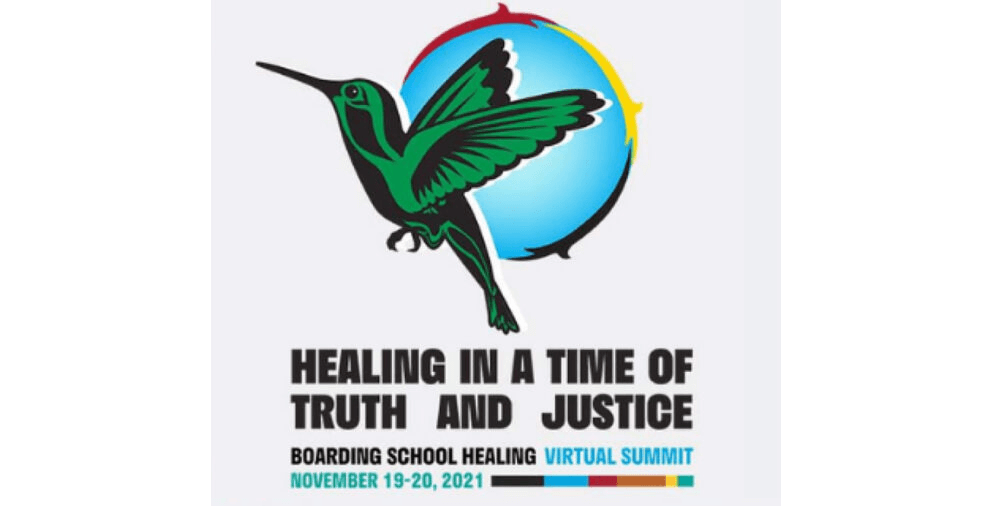
An Essay About the NABS Boarding School Healing Virtual Summit
by Princella Parker RedCorn (Umoⁿhoⁿ/Omaha), Shawnee Tribe Communications Coordinator
Content warning: this essay includes mentions of sexual abuse, forced sterilization.
This past November, I participated in my first boarding school healing virtual summit on behalf of the Shawnee Tribe—Healing in a Time of Truth and Justice—hosted by the National Native American Boarding School Healing Coalition (NABS). The summit focused on personal and community recovery surrounding residential schools in the United States. This past summer, more and more unmarked graves have been discovered on the grounds at Canadian and U.S. residential Indian schools. The catalyst: 215 unmarked graves located in Canada’s Kamloops Indian Residential School. As more geophysical work is done at school sites, this number only grows.
The NABS virtual summit was geared towards themes of healing, promoting self-care, and highlighting the positive, massive work being done today by survivors, survivors’ relatives, and Indigenous youth. The most powerful and eye-opening experience for me was hearing directly from survivors of the boarding school experience in the session Bearing Witness to Survivors Stories. This session spoke directly to my heart and made me want to educate myself further on the issue and how it trickled down to my own family tree.
Bearing witness has special meaning to Native people. We invite community members, family, and friends to witness our births, funerals, naming ceremonies, weddings, and cultural celebrations. ‘These events happened.’ ‘I was physically there.’ I felt like I was ready to hear from survivors via a digital platform, but really: I bore witness.
I bore witness to personal experiences and stories that seemed to come straight out of horror stories.
…A young girl, comfy in bed until an adult, the person she was supposed to trust and learn from, came to rape the child next to her. Pretending to be asleep, she prayed he wouldn’t come to her own bed.
…A young girl witnessed the authoritative figure she and her classmates had come to fear get angry and shove a fellow classmate down a set of stairs. She held in her tears, as not to draw attention to herself.
…A young woman left her recommended health appointment with a strange feeling. Later, she found out she and her mother were deceived and had unknowingly signed a form “consenting” to female sterilization.
An elder broke down in front of me, unable to even speak about his experience. Although the survivors’ experiences did not play out during a dark and stormy night as the horror genre would lead us to believe, I felt the dark, and I felt the storm of these survivors’ stories.
The memories they shared and were unable to share are unimaginable, and yet they are numerous. Hearing them directly from the survivors who witnessed it themselves, felt it themselves, and continue to carry it themselves, made me connect dots and fully understand why it is crucial to address this issue today. We must educate ourselves on the complete histories of residential and religious mission schools to truly know how they affected our people, our families, ourselves today.
I left the virtual summit with so many questions: Was my mother’s experience in a residential boarding school like her mother’s experience? Were my great-grandparents products of the boarding school system? Did their hearts break when they were all but forced to send their babies to live someplace they couldn’t see, touch or control? How did they cope? What toxic behaviors and colonial values were taught in those schools that trickled down to influence how I was raised?
Where does the boarding school experience end and my own children’s future begin?
This past September, the Shawnee Tribe commemorated its first Orange Shirt Day at the still-standing Shawnee Indian Mission Historical Site in Fairway, KS. Fairway is a suburb near the heart of Kansas City, KS – a sprawling metropolitan area of about 2.3 million in population. Neighbors and residents local to the mission walk their dogs along the path that weaves through the historic site grounds. Their children run ahead to look at the various flowers and plants on the grounds. Then, back to their home again.
As I seek answers to my personal questions and as we at the tribe work to find answers about the true history of the Shawnee Indian Mission and Manual Labor School, I hope you’ll join us in the work.
Wibthaha. (Thank you.)
- EXPLORE: The mission of the National Native American Boarding School Healing Coalition (NABS) is to lead in the pursuit of understanding and addressing the ongoing trauma created by the US Indian Boarding School policy.
- READ: Press Release – US Department of the Interior Announces Collaborative Effort (with NABS) to Support Federal Indian Boarding School Initiative.
- READ: More about Healing in a Time of Truth and Justice, the November 2021 Boarding School Healing Virtual Summit hosted by the National Native American Boarding School Healing Coalition.
- LOCATE: An American Indian Boarding School by your state.
- DOWNLOAD: Self-Care Resources from the NAB website.
- ENGAGE: with your U.S. congresspersons and urge them to support the Truth and Healing Commission on Indian Boarding School Policy Act.
